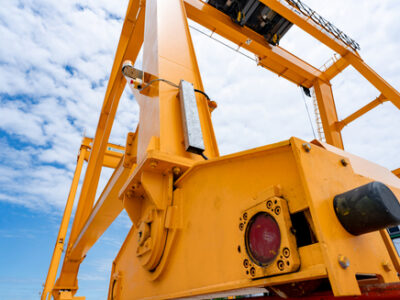
Working on a crane can be an exciting and challenging experience. Whether you are a seasoned crane operator or just starting out in the industry, safety should always be your top priority. Cranes are powerful machines that can pose serious risks if not operated correctly. In this blog post, we will discuss how to ensure a safe environment when working on a crane.
Understanding the risks
Before working on a crane, it is important to understand the potential risks involved. Cranes are heavy machinery that can cause serious injuries or even fatalities if not operated properly. Common risks associated with cranes include tipping over, rigging failures, electrical hazards, and falling objects. By being aware of these risks, you can better prepare yourself and take necessary precautions to prevent accidents.
Proper training
One of the most important ways to ensure a safe environment when working on a crane is to receive proper training. Crane operators must be trained and certified to operate the machinery safely. Training should cover crane operation, maintenance, and safety procedures. It is important to stay up to date with the latest safety regulations and guidelines to ensure that you are following best practices when operating a crane.
Performing pre-operational checks
Before operating a crane, it is essential to perform pre-operational checks to ensure that the machinery is in good working condition. This includes checking the crane’s controls, brakes, hoists, ropes, and safety devices. Any defects or malfunctions should be addressed before using the crane. Regular inspections and maintenance are crucial to prevent accidents and keep the crane in optimal working condition.
Proper rigging
Proper rigging is essential for the safe operation of a crane. Rigging refers to the process of attaching loads to the crane using slings, hooks, and other equipment. It is important to inspect rigging equipment for wear and tear and ensure that it is of the appropriate capacity for the load being lifted. Properly securing the load is crucial to prevent accidents and ensure the safety of everyone working on or around the crane.
Clear communication
Clear communication is key to ensuring a safe environment when working on a crane. Crane operators must communicate effectively with other workers on the site to coordinate lifts and ensure that everyone is clear on their roles and responsibilities. Using hand signals or radios can help to facilitate communication and prevent accidents caused by misunderstandings or miscommunication.
Fall protection
Working at heights on a crane can pose a significant risk of falling. It is important to use appropriate fall protection equipment, such as harnesses and lanyards, when working on the crane. Workers should be trained on how to properly use fall protection equipment and ensure that it is in good working condition. Implementing fall protection measures is crucial to prevent serious injuries or fatalities in the event of a fall.
Adhering to weight limits
Crane operators must adhere to weight limits when lifting loads with a crane. Exceeding the crane’s weight capacity can result in tipping over or structural failure, putting everyone on the site at risk. It is essential to know the crane’s weight limits and communicate them to everyone involved in the lift. Using load indicators and following proper rigging procedures can help to ensure that weight limits are not exceeded during operation.
Weather conditions
Weather conditions can significantly impact the safe operation of a crane. High winds, rain, ice, or snow can pose additional risks when working on a crane. It is important to monitor weather conditions and adjust work schedules accordingly to ensure that the crane can be operated safely. Extreme weather conditions may require temporarily shutting down crane operations to prevent accidents and ensure the safety of workers on the site.
Emergency response procedures
In the event of an emergency, it is important to have clear emergency response procedures in place. Crane operators should be trained on how to respond to emergencies, such as equipment malfunctions, electrical hazards, or worker injuries. Having a plan in place can help to minimize risks and ensure a quick and effective response in case of an emergency.
Summary
Overall, ensuring a safe environment when working on a crane requires proper training, regular maintenance, clear communication, and adherence to safety procedures. By following these guidelines and taking necessary precautions, you can minimize risks and ensure the safety of everyone on the site. Remember that safety should always be your top priority when working on a crane.
Need a Crane Inspector in Chandler, AZ?
American Inspection and Test, Inc. is a family owned and operated crane and aerial lift inspection service with 20 years of experience. Our mission is to elevate safety through a higher quality of certified inspectors and have a better standard testing and inspection procedures overall. We are known for our high standards and work ethic and have been recognized by multiple national, federal, state and city agencies. Increase safety and lower maintenance costs by calling us today.
